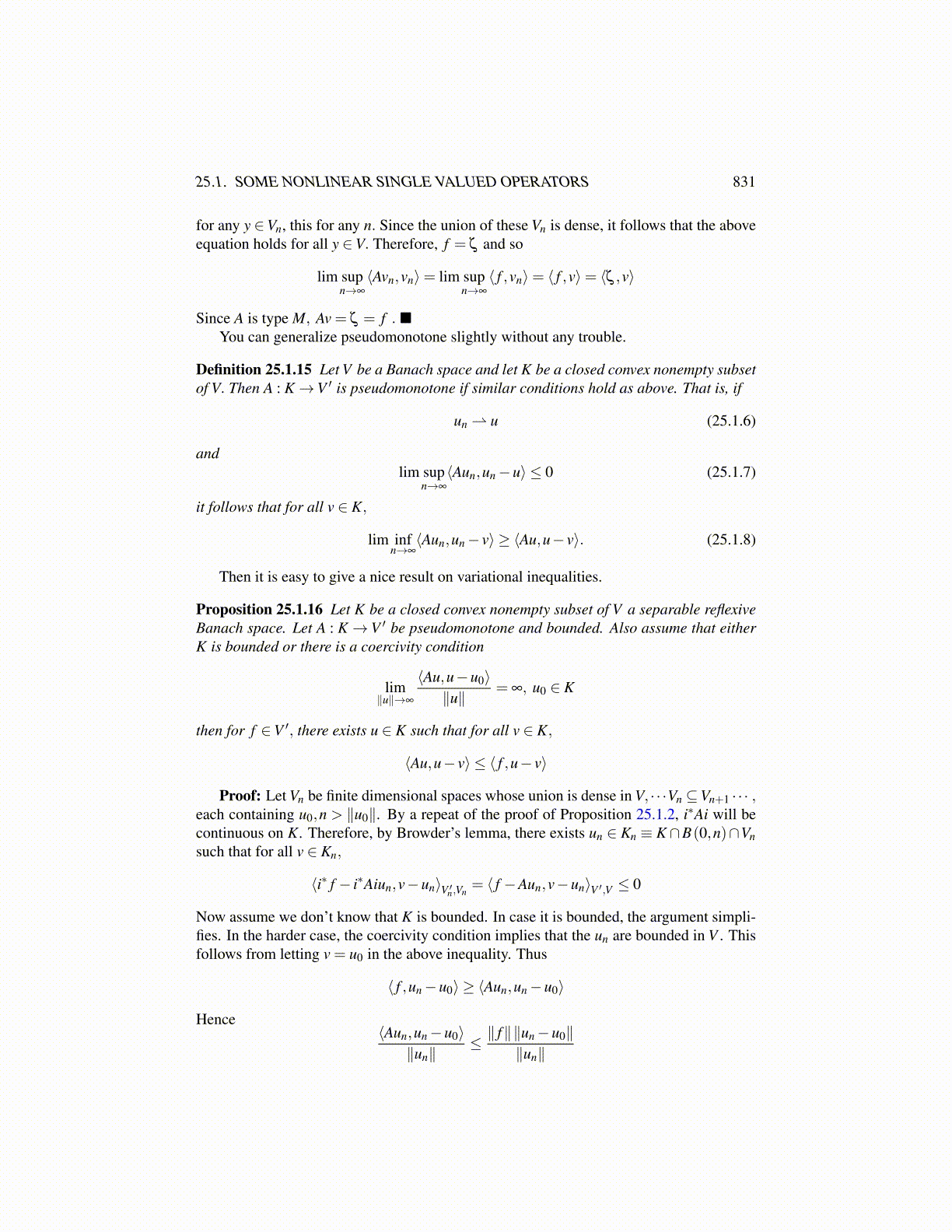
25.1. SOME NONLINEAR SINGLE VALUED OPERATORS 831
for any y ∈Vn, this for any n. Since the union of these Vn is dense, it follows that the aboveequation holds for all y ∈V. Therefore, f = ζ and so
lim supn→∞
⟨Avn,vn⟩= lim supn→∞
⟨ f ,vn⟩= ⟨ f ,v⟩= ⟨ζ ,v⟩
Since A is type M, Av = ζ = f .You can generalize pseudomonotone slightly without any trouble.
Definition 25.1.15 Let V be a Banach space and let K be a closed convex nonempty subsetof V. Then A : K→V ′ is pseudomonotone if similar conditions hold as above. That is, if
un ⇀ u (25.1.6)
andlim sup
n→∞
⟨Aun,un−u⟩ ≤ 0 (25.1.7)
it follows that for all v ∈ K,
lim infn→∞⟨Aun,un− v⟩ ≥ ⟨Au,u− v⟩. (25.1.8)
Then it is easy to give a nice result on variational inequalities.
Proposition 25.1.16 Let K be a closed convex nonempty subset of V a separable reflexiveBanach space. Let A : K→ V ′ be pseudomonotone and bounded. Also assume that eitherK is bounded or there is a coercivity condition
lim∥u∥→∞
⟨Au,u−u0⟩∥u∥
= ∞, u0 ∈ K
then for f ∈V ′, there exists u ∈ K such that for all v ∈ K,
⟨Au,u− v⟩ ≤ ⟨ f ,u− v⟩
Proof: Let Vn be finite dimensional spaces whose union is dense in V, · · ·Vn ⊆Vn+1 · · · ,each containing u0,n > ∥u0∥. By a repeat of the proof of Proposition 25.1.2, i∗Ai will becontinuous on K. Therefore, by Browder’s lemma, there exists un ∈ Kn ≡ K∩B(0,n)∩Vnsuch that for all v ∈ Kn,
⟨i∗ f − i∗Aiun,v−un⟩V ′n,Vn= ⟨ f −Aun,v−un⟩V ′,V ≤ 0
Now assume we don’t know that K is bounded. In case it is bounded, the argument simpli-fies. In the harder case, the coercivity condition implies that the un are bounded in V . Thisfollows from letting v = u0 in the above inequality. Thus
⟨ f ,un−u0⟩ ≥ ⟨Aun,un−u0⟩
Hence⟨Aun,un−u0⟩∥un∥
≤ ∥ f∥∥un−u0∥∥un∥